Review for Shangri-La: Part 2
Introduction
What’s more important to you, the destination or the journey? How you answer that question will ultimately determine if Shangri-La finds pride of place in your collections, or forever languishes in the if-only pile. I ‘cheated’. I looked ahead to the answer; or rather I watched the show twice through when it was still being streamed. You can guess where my sympathies lie given the enthusiasm with which I greeted Part 1 of Shangri-La when it arrived in the UK last month. Now that Part 2 is here, I’ll have to see just how far the momentum of that enthusiasm will take me.
The future has arrived, and with it all that the doomsayers promised, climate change, rising seas, and the end of civilisation as we know it. Of course the end of the old civilisation means the start of a new one, and the world of tomorrow is governed by a new set of rules, a carbon based economy. Net producers of carbon dioxide pay hefty fines and taxes, nations that are carbon dioxide sinks get the tax breaks. For future Japan, that has been realised by turning what was Tokyo into one giant genetically engineered carbon-sink jungle, rapidly growing, and inimical to human life. What people remain in the city do so in small walled enclaves such as the Duomo settlement. But relief has been promised in the Arcology of Atlas, an immense construction that is a veritable city in the sky, that when completed will provide comfortable living for all of Tokyo’s residents, if it’s ever completed that is.
Kuniko Hojo is a young woman released back into this world after a couple of years of juvenile detention, and it soon becomes clear that she is a woman of destiny. She returns to Duomo where she is expected to be the next leader of the Metal Age terrorist group, people who resent the Carbon Economy and its restrictive taxes, and want to put the people first. But when she sees how the people of Duomo are treated by the government, and how they are denied residency in Atlas, her aims become much bolder, to change the very shape of the world. That she’s a formidable personality, and a mean aim with a boomerang becomes immediately clear to Lieutenant Kunihito Kusanagi, part of the army group sent into Duomo to clamp down on its profligate waste of energy. It’s a meeting that will change both their lives. In the bowels of Atlas lives a young albino girl named Mikuni, waited on hand and foot like a princess by her retinue, and possessing a strange and lethal psychic ability. These three people are linked by destiny, and by the ancient daggers that each of them bears.
Meanwhile, a shut-in girl named Karin plays the carbon exchanges like a maestro on her get rich quick schemes, aided by her considerable programming skills, and an AI named Medusa, to the point where she can buy and sell whole countries at the push of a button. And at the top of the Atlas tower, Ryoko Naruse looks down on the world with arrogant disdain, considering all these people as pawns to use to further her own power. Only the time has come for the pawns to fight back. As this second half of Shangri-La begins, Kuniko has finally accepted her destiny to become the leader of Metal Age, and has planned an assault on Atlas, to get the people outside the tower the shelter they so desperately need.
The concluding twelve episodes of Shangri-La are presented across 2 discs by MVM.
Disc 1
13. Flying Girl
14. Transfigured City
15. Freak Defeat
16. Forest Frenzy
17. A Dark Night’s Resistance
18. Two-Headed Fable
Disc 2
19. Tokyo Airstrike
20. Melody of Connection
21. The Holy Land Lost
22. Eternal Bonds
23. Prelude to Collapse
24. Our Shangri-La
Picture
Shangri-La gets a 1.78:1 anamorphic transfer in the NTSC format. I guess that it came via Australia as it’s been shorn of the Funimation logo and Funimation trailers, but really it is just what you would see if you bought the Region 1 discs anyway. The image is clear and sharp throughout, with strong consistent colours, and smooth and detailed animation. Even better, the discs are progressively encoded, so you will get 24 fps playback on compatible equipment, making for even smoother animation.
Shangri-La already excels in character design, given the input from Range Murata, but it also delivers a very engaging future world as well, with a post collapse society modelled outside of Atlas, while the rich and powerful live technologically enhanced lives inside the metropolis. Tokyo is turned into ruins encrusted with rainforest, with the odd enclave of humanity in isolated communities linked by canals and waterways. While Atlas is the future metropolis, places like Duomo are built anew on the ruins of the old, and then places like Akihabara somehow manage to stay recognisable beneath the greenery and hold onto their character. Shangri-La is a visually arresting show, and it’s done full justice with the character design and the quality of the animation, especially the action sequences. Aesthetically this is among the pinnacle of Gonzo’s output.
Sound
You have the choice between Funimation’s DD 5.1 Surround English dub, or the original Japanese DD 2.0 Stereo, with optional translated subtitles and a signs only track. I went with the Japanese audio and it was an agreeable enough experience, the cast suited to their characters, and the action sequences coming across well. Shangri-La is also blessed with some excellent music, both in terms of the incidental score, and the three theme songs, including a belter of an opening theme from May’n. I gave the English dub a try, and while it is enthusiastically performed, I didn’t feel all that comfortable with the script adaptation, awkwardly formal at times, clumsily colloquial at others.
However, I have to raise an eyebrow at the subtitles. Back when Manga Video were offending the masses, they would deliberately create profane dubs to raise the BBFC rating of their product, and court controversy. Funimation’s dub for Shangri-La isn’t the problem, the English subtitles are, which contain a degree of profanity beyond that which you would see in a show of this genre and early-teen target audience. The odd thing is that the profanity isn’t present in the dub, and Japanese by its very nature is not a language that is profane in the same way as English. The four-letter-word usage here looks very out of place and uncharacteristic, and puts me in mind of some of the lesser fansubs. I also don’t recall the Crunchyroll subtitles being like this, which makes me wonder just what Funimation were thinking when they subtitled this show.
Extras
The discs present their content with static menus, and jacket pictures when at rest in compatible players.
Disc 1 offers an audio commentary on episode 1, with ADR director Tyler Walker joining lead writer J. Michael Tatum, and episode writer Patrick Seitz. As you can guess, this is a commentary which supplies much info about the script adaptation process, once you get past the mutual backslapping and chucklefest. Unfortunately, given that episode 15 is a pivotal moment in the show’s narrative, there’s not a lot of scene specificity going on, which is a missed opportunity.
The rest of the extras are on disc 2, beginning with an audio commentary for episode 23, with Tyler Walker joining Jad Saxton (Karin), and Jennifer Seaman (Ryoko Naruse) for a chat, which for reasons of time, I couldn’t listen to.
You get the textless opening again, and the two textless closings (second version). You also get the US Trailer for the show, as well as trailers for Pumpkin Scissors and Shana Season 2.
Conclusion
Oh Gonzo! You can almost rely on Gonzo to screw up a show’s ending. Ever since Kiddy Grade, they’ve had a habit of losing the plot for the last few episodes, and just throwing everything at the screen in an orgiastic frenzy of eye-candy, in the hope that the viewer will fail to notice the complete failure of narrative. It’s the rare Gonzo show that manages to hold things together for the conclusion, and when such shows do turn up, I find an unreasonable need to celebrate that fact. Shows like Speedgrapher, Basilisk, and Gankutsuou are rare exceptions, which keep making me hold out hope for each new Gonzo show, despite them turning into another Kiddy Grade, Gantz, Trinity Blood or Black Cat. The thing is that the final episode crash and burn hurts more depending on just how good the preceding episodes were, and for most of its run Shangri-La is the best show I have seen from Studio Gonzo. You can bet how much it hurts then, watching the final two episodes of this series again!
Up until that point, Shangri-La is a well balanced, well-told story which balances sci-fi, economics and mysticism with a whole lot of action, a fair bit of comedy, and some great character development. For the final two episodes, it ditches pretty much everything else and just hangs onto the mysticism and action. The conclusion of the story feels like they’re making it up as they go along, and ripping off Wargames to boot. The plot twists and turns like a sidewinder, and with each new revelation, aiming to top the previous one in terms of sensationalist grandstanding, my head sinks lower and lower into my hands as I lament the loss of the earlier coherent and constructive tale-spinning. They’ll pull out any old nonsense as long as it delivers fireworks on screen, and as long as it makes use of every character so far introduced in the show, no matter how irrelevant they are to the conclusion. It’s typical Gonzo. Only the final five minute coda after the dust has settled pulls it back, and offers some closure to the story, some meaning to the characters, and in that respect, Shangri-La does leave on the right note, but that’s only after two episodes of discord and disharmony.
As I said in my opening paragraph though, I’m more appreciative of the journey than the destination, and I have to say again that for 22 episodes at least, Shangri-La is the best thing that Gonzo have produced. The first 10 episodes on this collection continue and build on the first half, with careful, measured storytelling, developing some engaging characters and a very interesting future world. Read my review of Part 1 to get a better idea of what the show is about, as this second half builds on that, and offers the same level of quality. I almost feel like suggesting that you buy this series, watch up to episode 22, and then eject the disc and make up your own ending in your head. It will probably be better than the real thing. But truth be told, this third time around, the ending of Shangri-La didn’t quite rankle as much as it did the first two times I saw the show. Maybe there is something of worth in there, or rather as I suspect, now that I know the pain is coming, I can steel myself for it beforehand. 91.7% of Shangri-La is the best show that Gonzo have made. I think that kind of maths is worth braving the final 8.3% for.



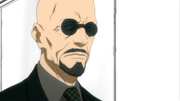

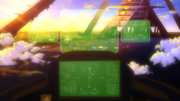
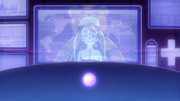
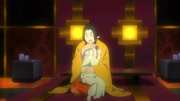

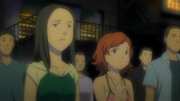
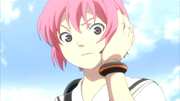



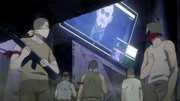

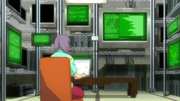
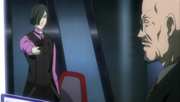

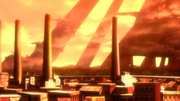


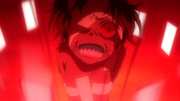
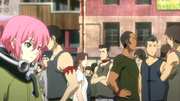





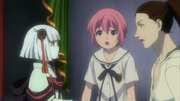








































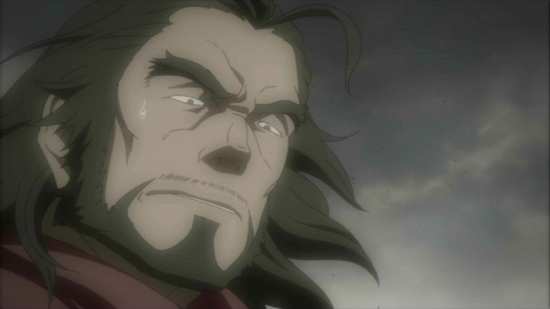




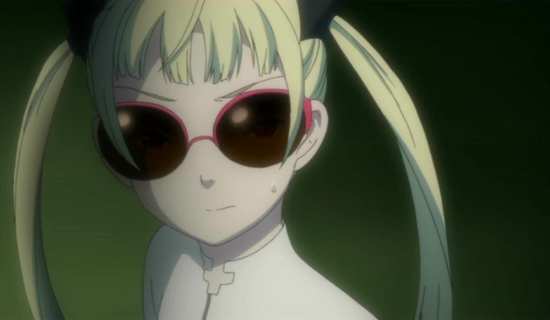

Your Opinions and Comments
Be the first to post a comment!